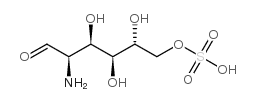The charged milieu: a major player in fertilization reactions.
Marcela Maldonado, Gayani Weerasinghe, Fabienne Ambroise, Edward Yamoah, Monica Londono, Juan Carlos Pelayo, Melina Grigorian, Steven B Oppenheimer
Index: Acta Histochem. 106(1) , 3-10, (2004)
Full Text: HTML
Abstract
In previous studies, we have found that negatively charged, but not uncharged, amino acids and sugars block sea urchin fertilization. These studies were developed from modeling work in non-living systems using derivatized agarose beads that suggested that charge-charge bonding may control at least some adhesive interactions. In the present study, the effects of positively charged, negatively charged and uncharged molecules were examined in the sea urchin sperm-egg system in over 300 individual trials. The results indicate that depending on the specific molecules utilized, both sperm and egg are exquisitely sensitive to charged but not uncharged molecules and to pH changes in sea water caused by some of the charged molecules. It is shown that egg activation, as well as sperm motility and sperm-egg interactions, can be affected by charged molecules. One compound, fructose-1-phosphate blocked fertilization in S. purpuratus sea urchins but not in Lytechinus pictus sea urchins. These findings indicate that charge alone cannot explain all the results. In this case, the presence of a ketone instead of an aldehyde group indicates that species-specific components may control fertilization reactions. The present study is a comprehensive survey of the effects of charge, pH and molecular structure on the fertilization activation continuum in a model system of sea urchins.
Related Compounds
| Structure | Name/CAS No. | Molecular Formula | Articles |
|---|---|---|---|
 |
D-Glucosamine-6-sulfate
CAS:91674-26-9 |
C6H13NO8S |
|
Human ficolin-2 recognition versatility extended: an update ...
2014-12-20 [FEBS Lett. 588(24) , 4694-700, (2014)] |
|
Characteristics of the glmS ribozyme suggest only structural...
2006-04-01 [RNA 12 , 607 - 619, (2006)] |
|
The effects of glucosamine sulfate on intervertebral disc an...
2015-06-01 [Spine J. 15 , 1339-46, (2015)] |
|
Binding of heparin to antithrombin III: a chemical proof of ...
1988-08-15 [Carbohydr. Res. 179 , 163-72, (1988)] |
|
Common binding sites for beta-amyloid fibrils and fibroblast...
1999-10-22 [J. Biol. Chem. 274(43) , 30631-5, (1999)] |